Igor Krawczuk
Why risk matters for protein binder design
Apr 02, 2025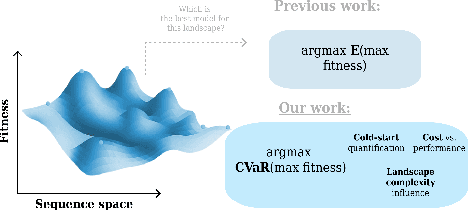
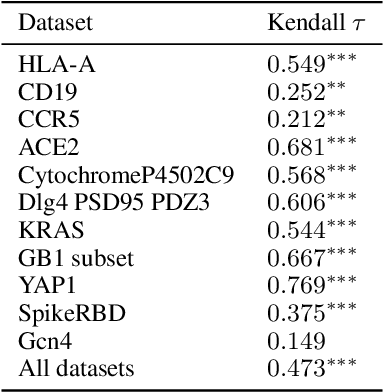
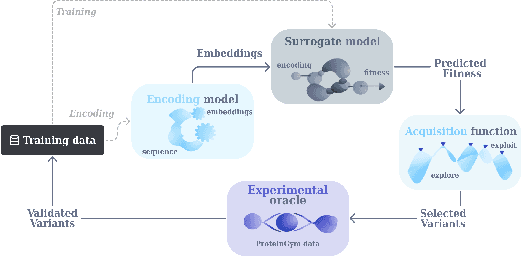
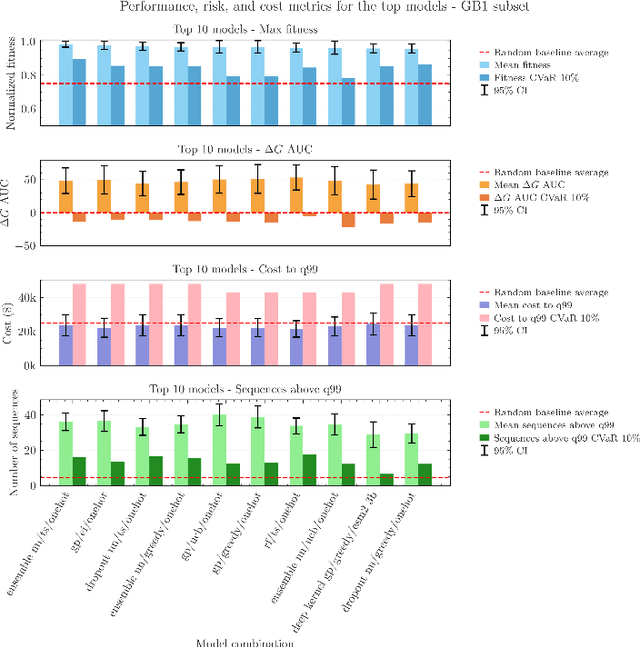
Abstract:Bayesian optimization (BO) has recently become more prevalent in protein engineering applications and hence has become a fruitful target of benchmarks. However, current BO comparisons often overlook real-world considerations like risk and cost constraints. In this work, we compare 72 model combinations of encodings, surrogate models, and acquisition functions on 11 protein binder fitness landscapes, specifically from this perspective. Drawing from the portfolio optimization literature, we adopt metrics to quantify the cold-start performance relative to a random baseline, to assess the risk of an optimization campaign, and to calculate the overall budget required to reach a fitness threshold. Our results suggest the existence of Pareto-optimal models on the risk-performance axis, the shift of this preference depending on the landscape explored, and the robust correlation between landscape properties such as epistasis with the average and worst-case model performance. They also highlight that rigorous model selection requires substantial computational and statistical efforts.
Multi-Agent Risks from Advanced AI
Feb 19, 2025



Abstract:The rapid development of advanced AI agents and the imminent deployment of many instances of these agents will give rise to multi-agent systems of unprecedented complexity. These systems pose novel and under-explored risks. In this report, we provide a structured taxonomy of these risks by identifying three key failure modes (miscoordination, conflict, and collusion) based on agents' incentives, as well as seven key risk factors (information asymmetries, network effects, selection pressures, destabilising dynamics, commitment problems, emergent agency, and multi-agent security) that can underpin them. We highlight several important instances of each risk, as well as promising directions to help mitigate them. By anchoring our analysis in a range of real-world examples and experimental evidence, we illustrate the distinct challenges posed by multi-agent systems and their implications for the safety, governance, and ethics of advanced AI.
Going beyond compositional generalization, DDPMs can produce zero-shot interpolation
May 29, 2024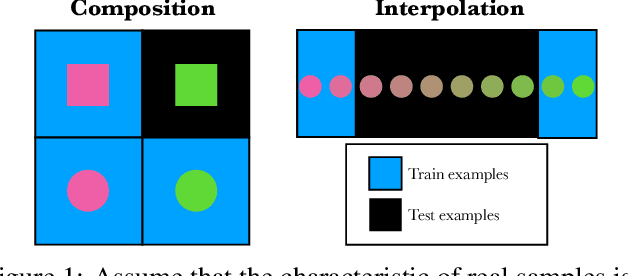



Abstract:Denoising Diffusion Probabilistic Models (DDPMs) exhibit remarkable capabilities in image generation, with studies suggesting that they can generalize by composing latent factors learned from the training data. In this work, we go further and study DDPMs trained on strictly separate subsets of the data distribution with large gaps on the support of the latent factors. We show that such a model can effectively generate images in the unexplored, intermediate regions of the distribution. For instance, when trained on clearly smiling and non-smiling faces, we demonstrate a sampling procedure which can generate slightly smiling faces without reference images (zero-shot interpolation). We replicate these findings for other attributes as well as other datasets. $\href{https://github.com/jdeschena/ddpm-zero-shot-interpolation}{\text{Our code is available on GitHub.}}$
MEDITRON-70B: Scaling Medical Pretraining for Large Language Models
Nov 27, 2023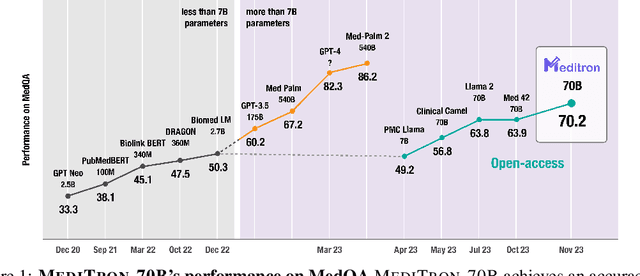
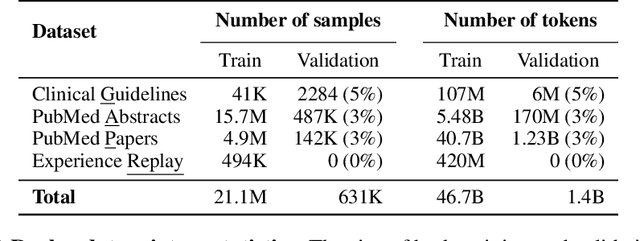
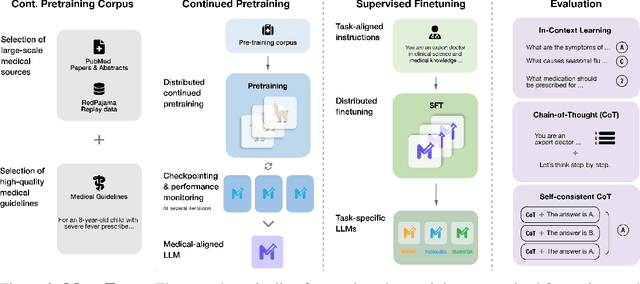
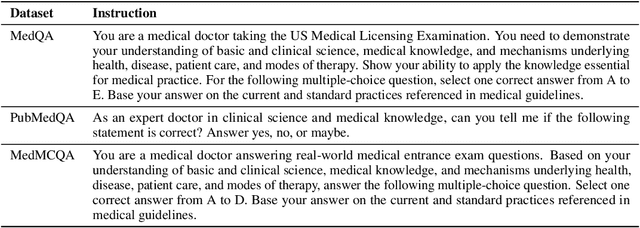
Abstract:Large language models (LLMs) can potentially democratize access to medical knowledge. While many efforts have been made to harness and improve LLMs' medical knowledge and reasoning capacities, the resulting models are either closed-source (e.g., PaLM, GPT-4) or limited in scale (<= 13B parameters), which restricts their abilities. In this work, we improve access to large-scale medical LLMs by releasing MEDITRON: a suite of open-source LLMs with 7B and 70B parameters adapted to the medical domain. MEDITRON builds on Llama-2 (through our adaptation of Nvidia's Megatron-LM distributed trainer), and extends pretraining on a comprehensively curated medical corpus, including selected PubMed articles, abstracts, and internationally-recognized medical guidelines. Evaluations using four major medical benchmarks show significant performance gains over several state-of-the-art baselines before and after task-specific finetuning. Overall, MEDITRON achieves a 6% absolute performance gain over the best public baseline in its parameter class and 3% over the strongest baseline we finetuned from Llama-2. Compared to closed-source LLMs, MEDITRON-70B outperforms GPT-3.5 and Med-PaLM and is within 5% of GPT-4 and 10% of Med-PaLM-2. We release our code for curating the medical pretraining corpus and the MEDITRON model weights to drive open-source development of more capable medical LLMs.
Distributed Extra-gradient with Optimal Complexity and Communication Guarantees
Aug 17, 2023
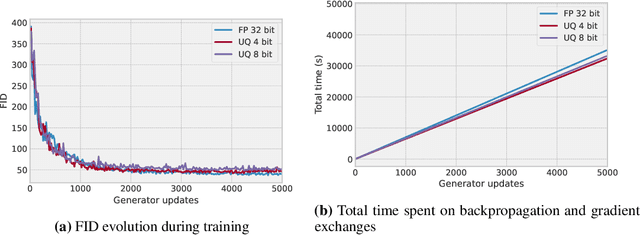

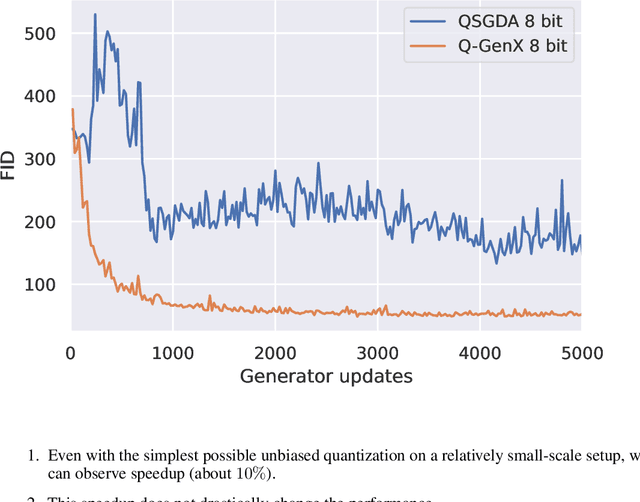
Abstract:We consider monotone variational inequality (VI) problems in multi-GPU settings where multiple processors/workers/clients have access to local stochastic dual vectors. This setting includes a broad range of important problems from distributed convex minimization to min-max and games. Extra-gradient, which is a de facto algorithm for monotone VI problems, has not been designed to be communication-efficient. To this end, we propose a quantized generalized extra-gradient (Q-GenX), which is an unbiased and adaptive compression method tailored to solve VIs. We provide an adaptive step-size rule, which adapts to the respective noise profiles at hand and achieve a fast rate of ${\mathcal O}(1/T)$ under relative noise, and an order-optimal ${\mathcal O}(1/\sqrt{T})$ under absolute noise and show distributed training accelerates convergence. Finally, we validate our theoretical results by providing real-world experiments and training generative adversarial networks on multiple GPUs.
DiGress: Discrete Denoising diffusion for graph generation
Sep 29, 2022
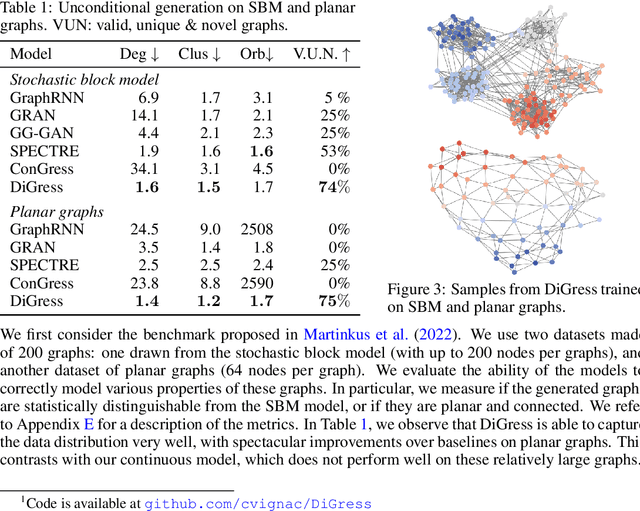

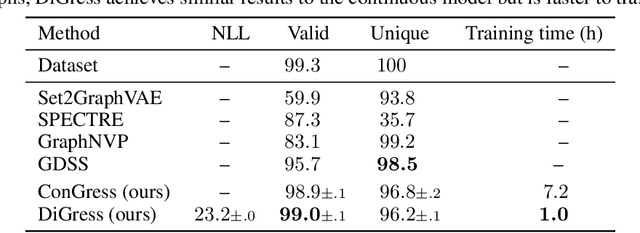
Abstract:This work introduces DiGress, a discrete denoising diffusion model for generating graphs with categorical node and edge attributes. Our model defines a diffusion process that progressively edits a graph with noise (adding or removing edges, changing the categories), and a graph transformer network that learns to revert this process. With these two ingredients in place, we reduce distribution learning over graphs to a simple sequence of classification tasks. We further improve sample quality by proposing a new Markovian noise model that preserves the marginal distribution of node and edge types during diffusion, and by adding auxiliary graph-theoretic features derived from the noisy graph at each diffusion step. Finally, we propose a guidance procedure for conditioning the generation on graph-level features. Overall, DiGress achieves state-of-the-art performance on both molecular and non-molecular datasets, with up to 3x validity improvement on a dataset of planar graphs. In particular, it is the first model that scales to the large GuacaMol dataset containing 1.3M drug-like molecules without using a molecule-specific representation such as SMILES or fragments.
Proximal Point Imitation Learning
Sep 22, 2022

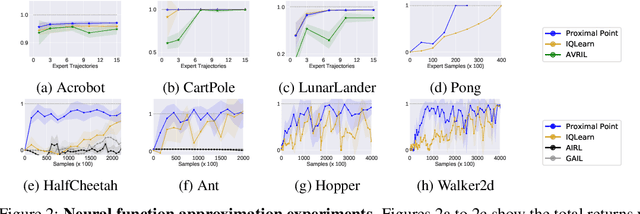

Abstract:This work develops new algorithms with rigorous efficiency guarantees for infinite horizon imitation learning (IL) with linear function approximation without restrictive coherence assumptions. We begin with the minimax formulation of the problem and then outline how to leverage classical tools from optimization, in particular, the proximal-point method (PPM) and dual smoothing, for online and offline IL, respectively. Thanks to PPM, we avoid nested policy evaluation and cost updates for online IL appearing in the prior literature. In particular, we do away with the conventional alternating updates by the optimization of a single convex and smooth objective over both cost and Q-functions. When solved inexactly, we relate the optimization errors to the suboptimality of the recovered policy. As an added bonus, by re-interpreting PPM as dual smoothing with the expert policy as a center point, we also obtain an offline IL algorithm enjoying theoretical guarantees in terms of required expert trajectories. Finally, we achieve convincing empirical performance for both linear and neural network function approximation.
Filling gaps in trustworthy development of AI
Dec 14, 2021Abstract:The range of application of artificial intelligence (AI) is vast, as is the potential for harm. Growing awareness of potential risks from AI systems has spurred action to address those risks, while eroding confidence in AI systems and the organizations that develop them. A 2019 study found over 80 organizations that published and adopted "AI ethics principles'', and more have joined since. But the principles often leave a gap between the "what" and the "how" of trustworthy AI development. Such gaps have enabled questionable or ethically dubious behavior, which casts doubts on the trustworthiness of specific organizations, and the field more broadly. There is thus an urgent need for concrete methods that both enable AI developers to prevent harm and allow them to demonstrate their trustworthiness through verifiable behavior. Below, we explore mechanisms (drawn from arXiv:2004.07213) for creating an ecosystem where AI developers can earn trust - if they are trustworthy. Better assessment of developer trustworthiness could inform user choice, employee actions, investment decisions, legal recourse, and emerging governance regimes.
 Add to Chrome
Add to Chrome Add to Firefox
Add to Firefox Add to Edge
Add to Edge